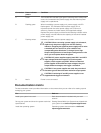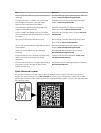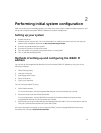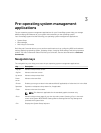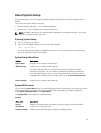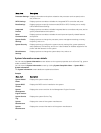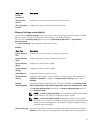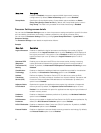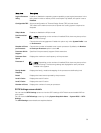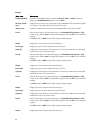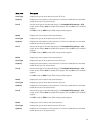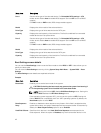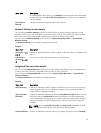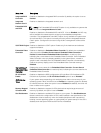
Menu Item Description
Contact
Information
System CPLD
Version
Displays the current revision of the system CPLD firmware.
UEFI Compliance
Version
Displays the system firmware UEFI compliance level.
Memory Settings screen details
You can use the Memory Settings screen to view all the memory settings as well as to enable or disable
specific memory functions such as system memory testing and node interleaving.
You can view the Memory Setting screen by clicking System Setup Main Menu → System BIOS →
Memory Settings.
The Memory Settings screen details are explained as follows:
Example
Menu Item Description
System Memory
Size
Displays the amount of memory installed in the system.
System Memory
Type
Displays the type of memory installed in the system.
System Memory
Speed
Displays the system memory speed.
System Memory
Voltage
Displays the system memory voltage.
Video Memory Displays the amount of video memory.
System Memory
Testing
Specifies whether system memory tests are run during system boot. Options are
Enabled and Disabled. By default, the System Memory Testing option is set to
Disabled.
Memory
Operating Mode
Specifies the memory operating mode. The options available are Optimizer Mode,
Advanced ECC Mode, Mirror Mode, Spare Mode, Spare with Advanced ECC Mode,
and Dell Fault Resilient Mode. By default, the Memory Operating Mode option is
set to Optimizer Mode.
NOTE: The Memory Operating Mode can have different defaults and available
options based on the memory configuration of your system.
NOTE: The Dell Fault Resilient Mode establishes an area of memory that is
fault resilient. This mode can be used by an operating system that supports the
feature to load critical applications or enables the operating system kernel to
maximize system availability.
Node Interleaving Specifies if Non-Uniform Memory architecture (NUMA) is supported. If this field is
Enabled, memory interleaving is supported if a symmetric memory configuration is
37



